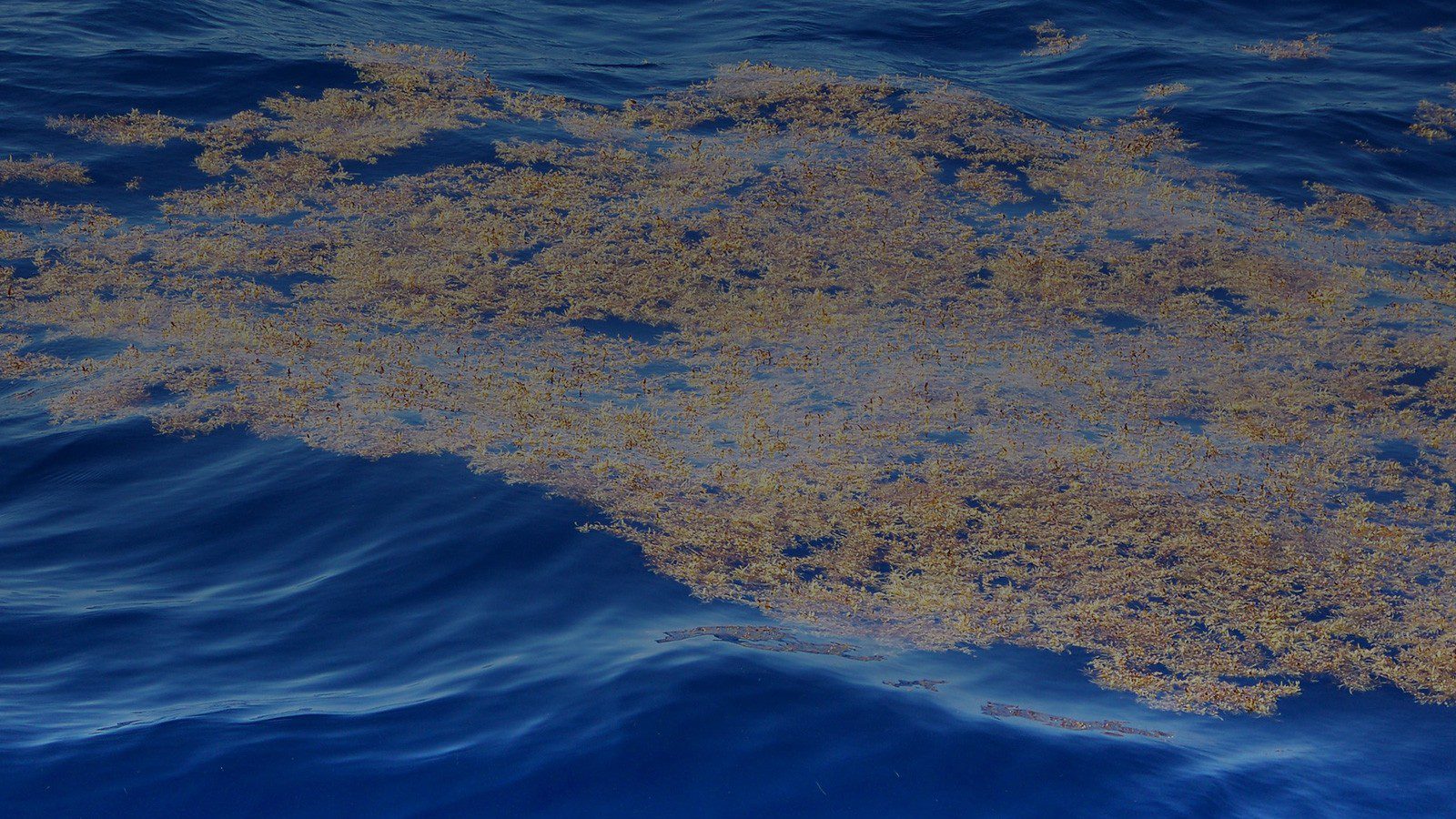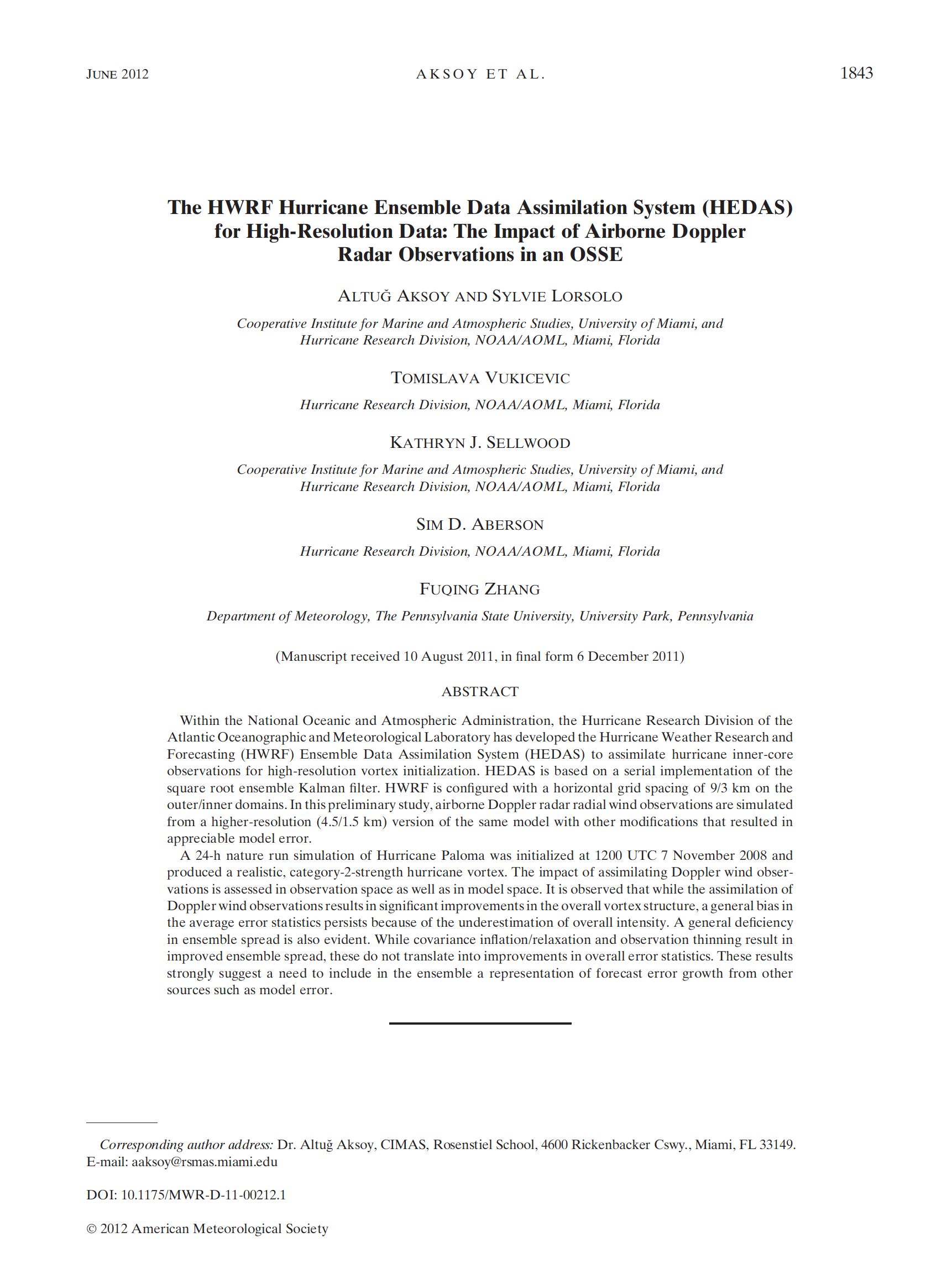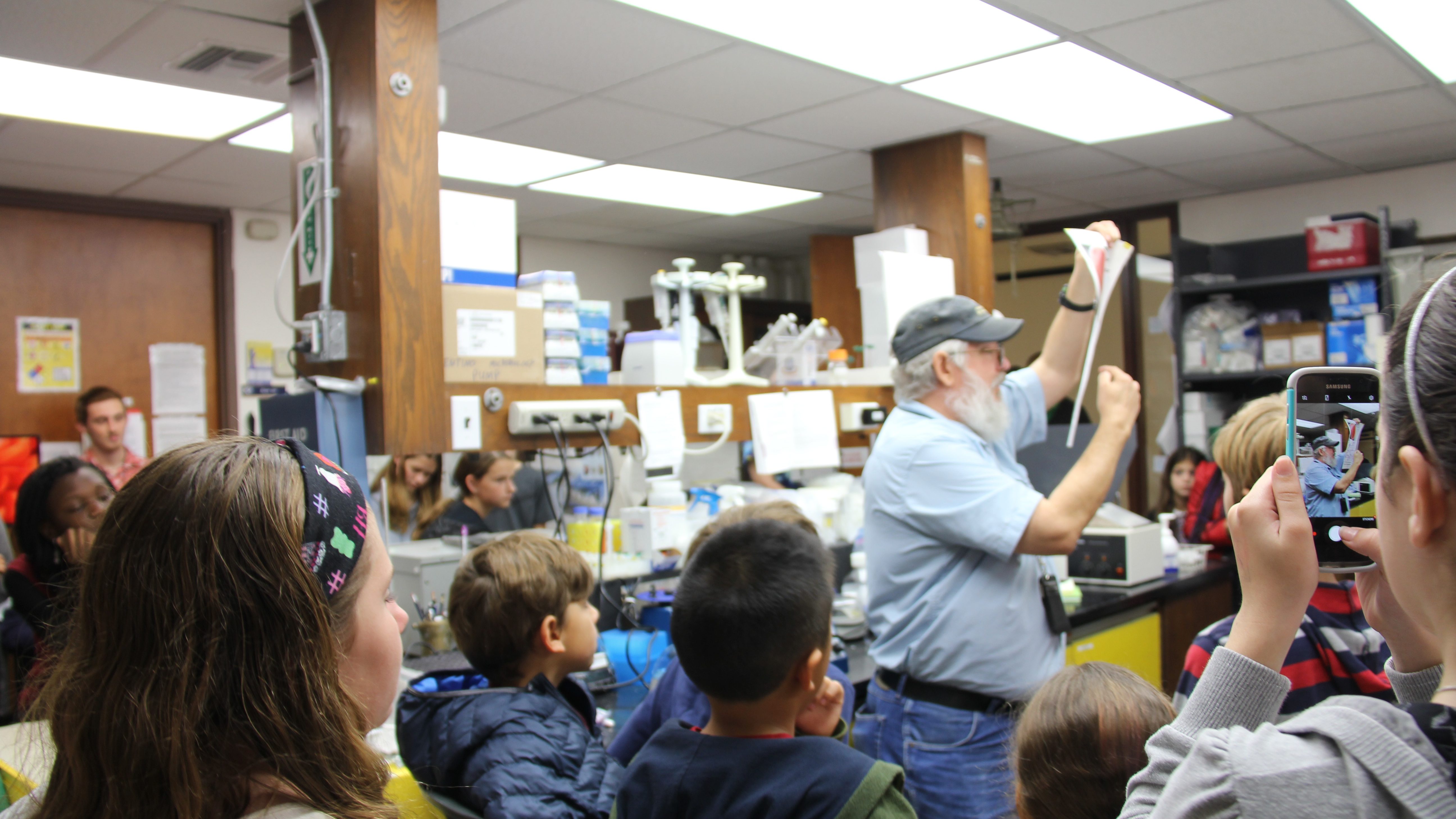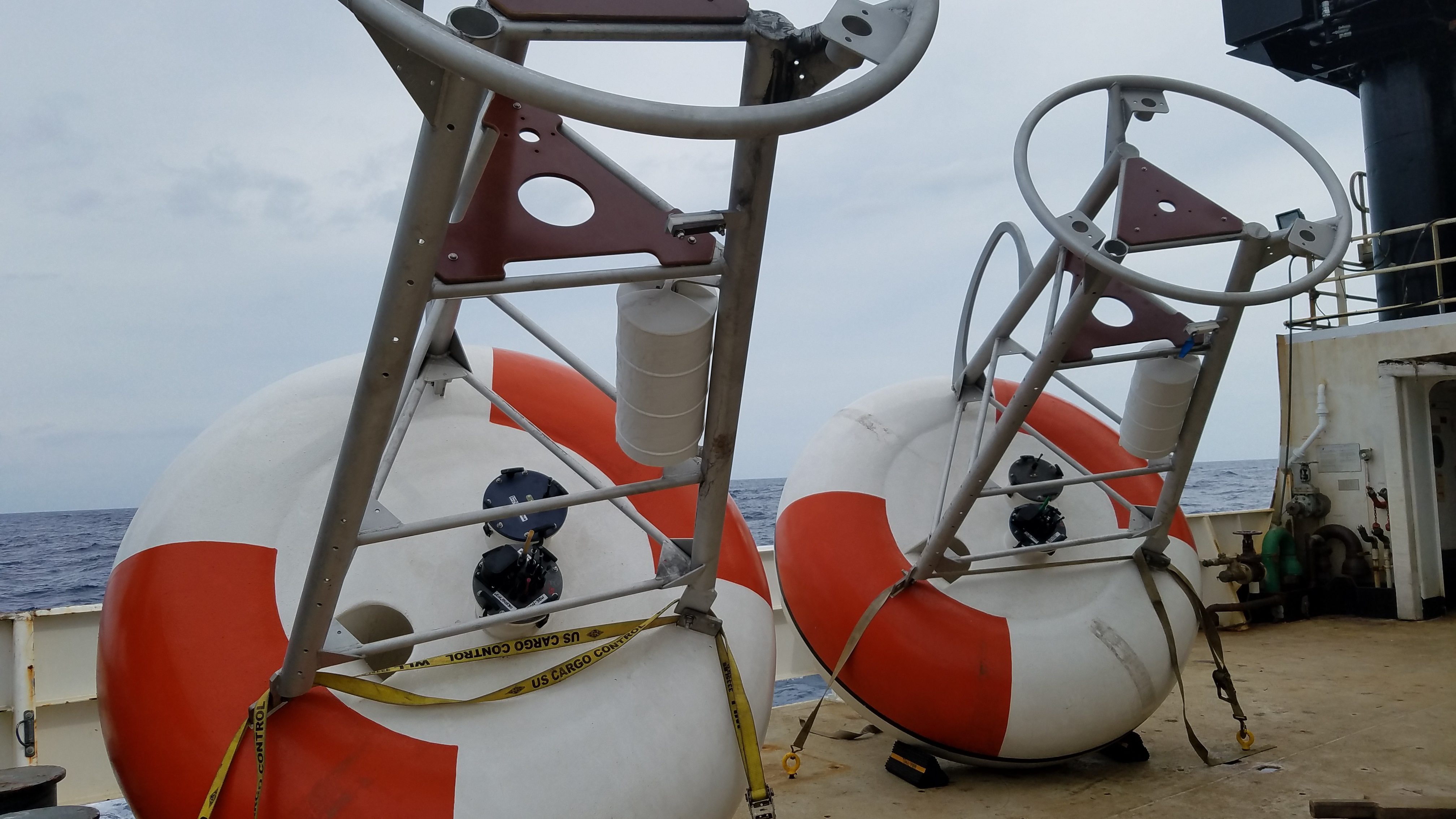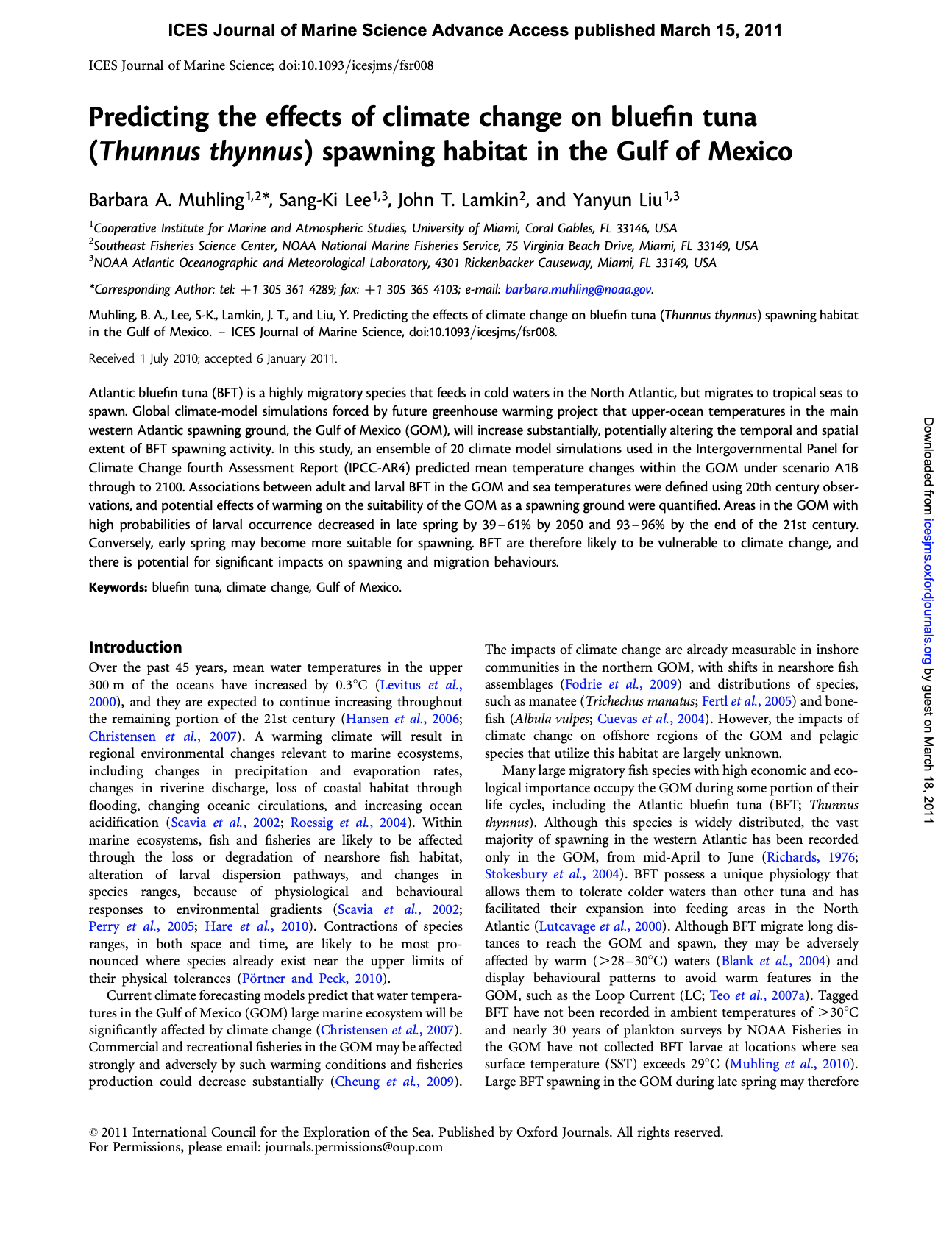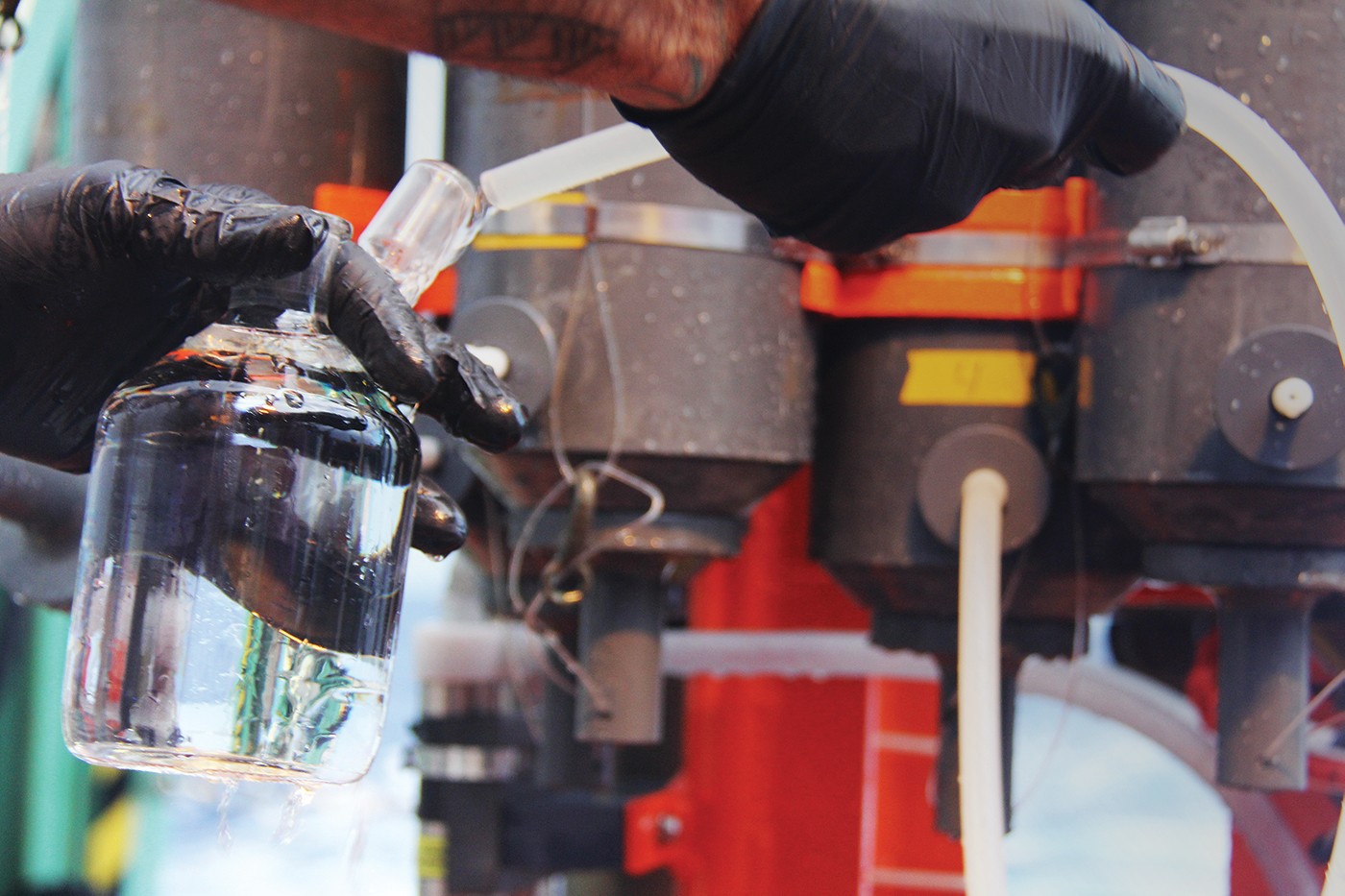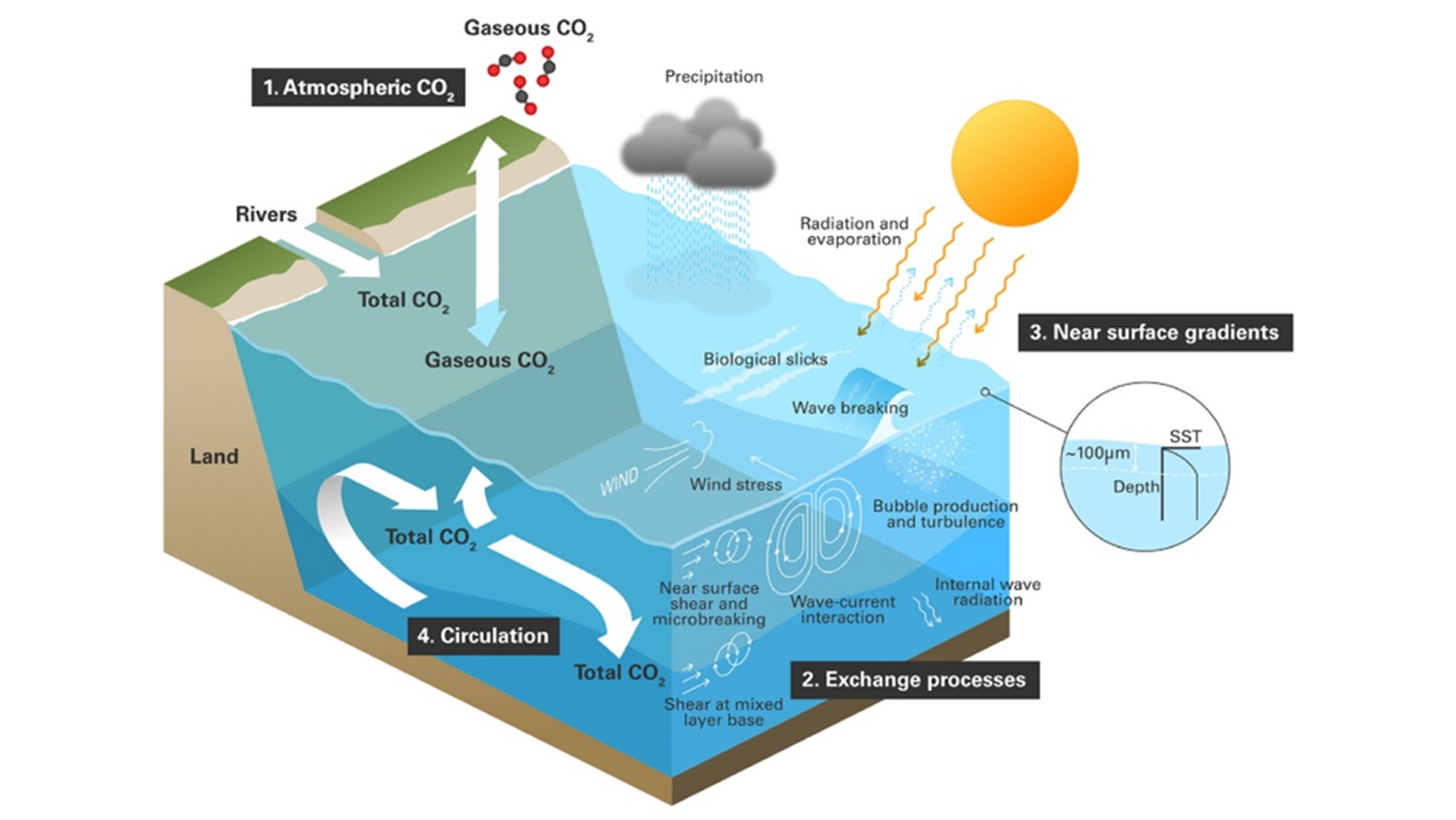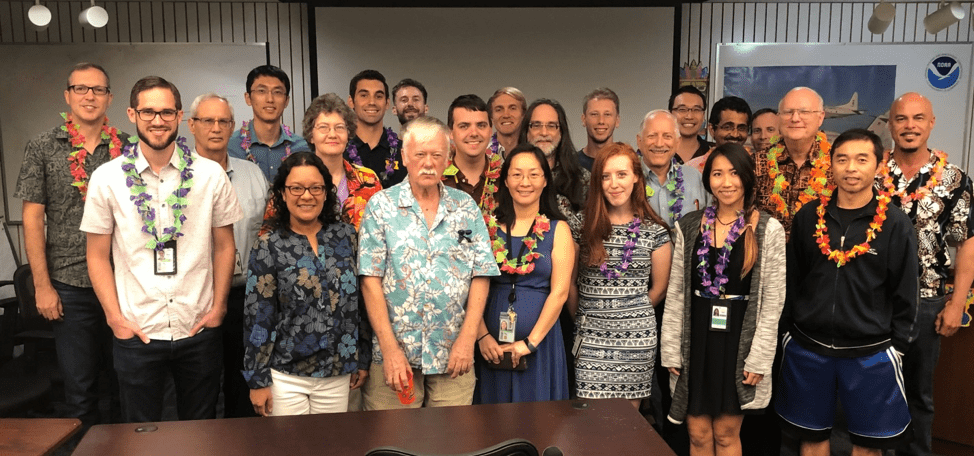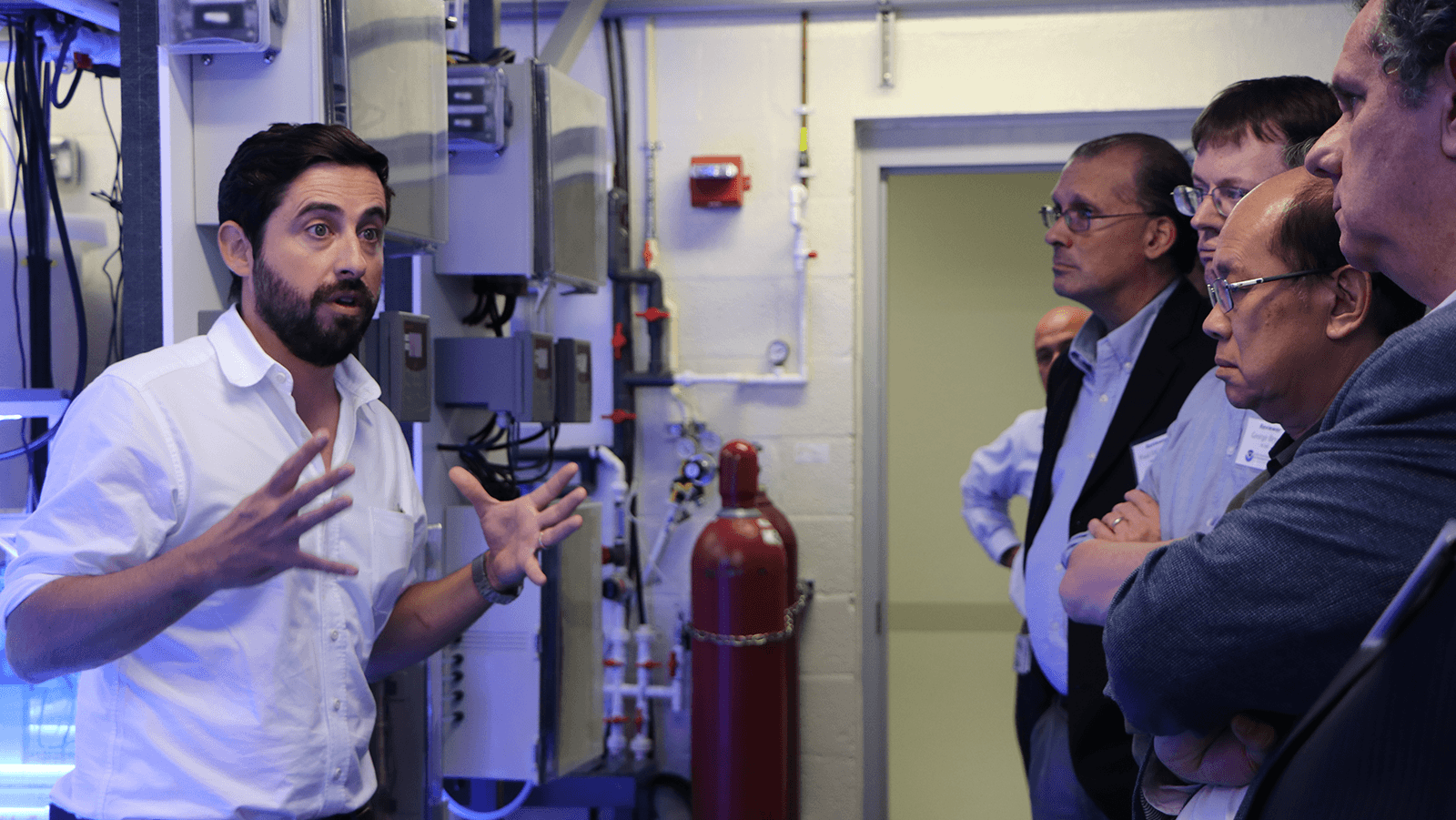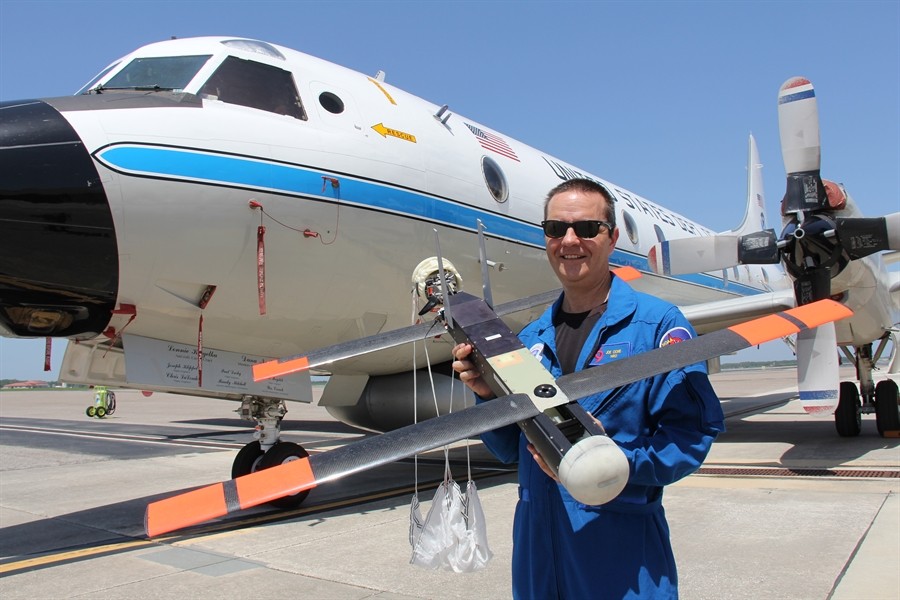Aksoy, A., S. Lorsolo, T. Vukicevic, K.J. Sellwood, S.D. Aberson, and F. Zhang, 2012: The HWRF Hurricane Ensemble Data Assimilation System (HEDAS) for High-Resolution Data: The Impact of Airborne Doppler Radar Observations in an OSSE. Mon. Wea. Rev., 140, 1843–1862, https://doi.org/10.1175/MWR-D-11-00212.1
Abstract:
Within the National Oceanic and Atmospheric Administration, the Hurricane Research Division of the Atlantic Oceanographic and Meteorological Laboratory has developed the Hurricane Weather Research and Forecasting (HWRF) Ensemble Data Assimilation System (HEDAS) to assimilate hurricane inner-core observations for high-resolution vortex initialization. HEDAS is based on a serial implementation of the square root ensemble Kalman filter. HWRF is configured with a horizontal grid spacing of 9/3 km on the outer/inner domains. In this preliminary study, airborne Doppler radar radial wind observations are simulated from a higher-resolution (4.5/1.5 km) version of the same model with other modifications that resulted in appreciable model error. A 24-h nature run simulation of Hurricane Paloma was initialized at 1200 UTC 7 November 2008 and produced a realistic, category-2-strength hurricane vortex. The impact of assimilating Doppler wind observations is assessed in observation space as well as in model space. It is observed that while the assimilation of Doppler wind observations results in significant improvements in the overall vortex structure, a general bias in the average error statistics persists because of the underestimation of overall intensity. A general deficiency in ensemble spread is also evident. While covariance inflation/relaxation and observation thinning result in improved ensemble spread, these do not translate into improvements in overall error statistics. These results strongly suggest a need to include in the ensemble a representation of forecast error growth from other sources such as model error.
Download PDF
